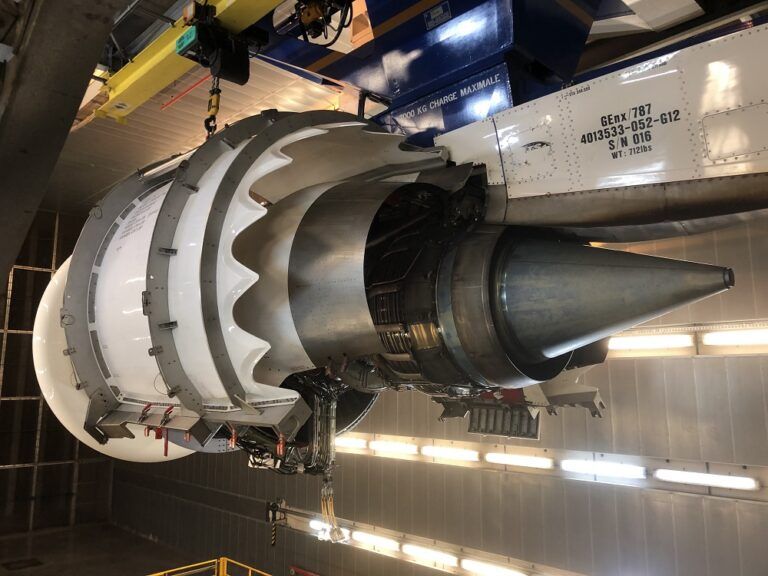To pass a performance test, the parameters of an aircraft engine have to be rigorously checked.
In the case of vibration, the correct balance is checked at two points on the engine and monitored by permanently mounted accelerometers that continuously record the vibratory displacement, which must remain within a very precise tolerance level. To gain more expertise in this field, Air France Industries contacted HBK.
The solution was integrating a Tescia repetitive testing system, including HBK’s LAN‐XI data acquisition hardware and a dedicated PC into the Zephyr bench.
This resulted in a better understanding of signals and how to handle them with confidence, consistent measurement ensured by remote check of non-physically accessible accelerometers and easy interpretation of the vibration behavior of two couplings rotating at different speeds due to Tescia providing simple and immediate information from complex processes.
The check and overhaul of the engines, an Engine Shop Visit, takes place after a certain number of flight hours specified by the manufacturer, or during a major maintenance carried out every four or five years. With a workforce of more than 14,000 people, Air France Industries is one of the major players in engine MRO and services more than 3000 aircraft operated by 200 airlines worldwide.
An aircraft engine that needs to be overhauled spends about three months at the Air France Industries workshops at Orly and Roissy. The engine is dismantled, the parts are inspected in minute detail, cleaned, changed or repaired, and the whole assembly is reassembled by the dedicated technical teams before final testing.
Before being allowed to fly again, an engine must be tested in conditions as close as possible to real life circumstances and must pass a performance test on the Zephyr test bench, where many parameters are checked including thrust, temperature at different points on the engine, pressure, and vibration levels.
The bench will of course prepare for this crucial stage and, in the case of vibration, the correct balance will be checked and adjusted at two points on the engine and measured by permanently mounted accelerometers. These sensors continuously record the vibratory displacement during aircraft operation, which must remain within a very precise tolerance level. Wishing to go further with these vibration measurements and to gain more expertise in this field, Ivan Rouesné, Zephyr’s Dubanc manager, contacted HBK.
After analyzing the customer’s requirements, Philippe Potereau, HBK’s business development manager, initially proposed to temporarily add a parallel system dedicated to repetitive vibration measurements into the Zephyr bench – that is the Tescia repetitive testing system designed in close collaboration with users from the aerospace industry for the measurement of rotating machines. A complete system, which includes Brüel & Kjær’s LAN‐XI data acquisition hardware and a dedicated PC, can be used in a small production environment with just one user, or in a larger system with multiple test and monitoring seats, guaranteeing immediate and reliable access to data by several teams simultaneously.
The LAN-XI data acquisition front-end driven by Tescia software pleasantly surprised the users of the Zephyr test bench by its compactness and functionality. They can now go further in their analysis in preparation for performance tests and look forward to continuing to gain engine expertise with the new system and receiving technical support from HBK.
This article was provided by HBK





